Close-up of the unique hundred-year-old stone bridge in Nghe An
(Baonghean.vn) - With solid stone splicing techniques, after a century of existence, Quan Thanh stone bridge in Yen Thanh district has become a "one of a kind" ancient bridge in Nghe An.
 |
| Bau Roc, located between Trung Thanh and Nam Thanh communes, is a long-standing drainage canal. Previously, this lake was very wide, but now it has been filled in and built over, making the lake shallow and narrow. Photo: Huy Thu |
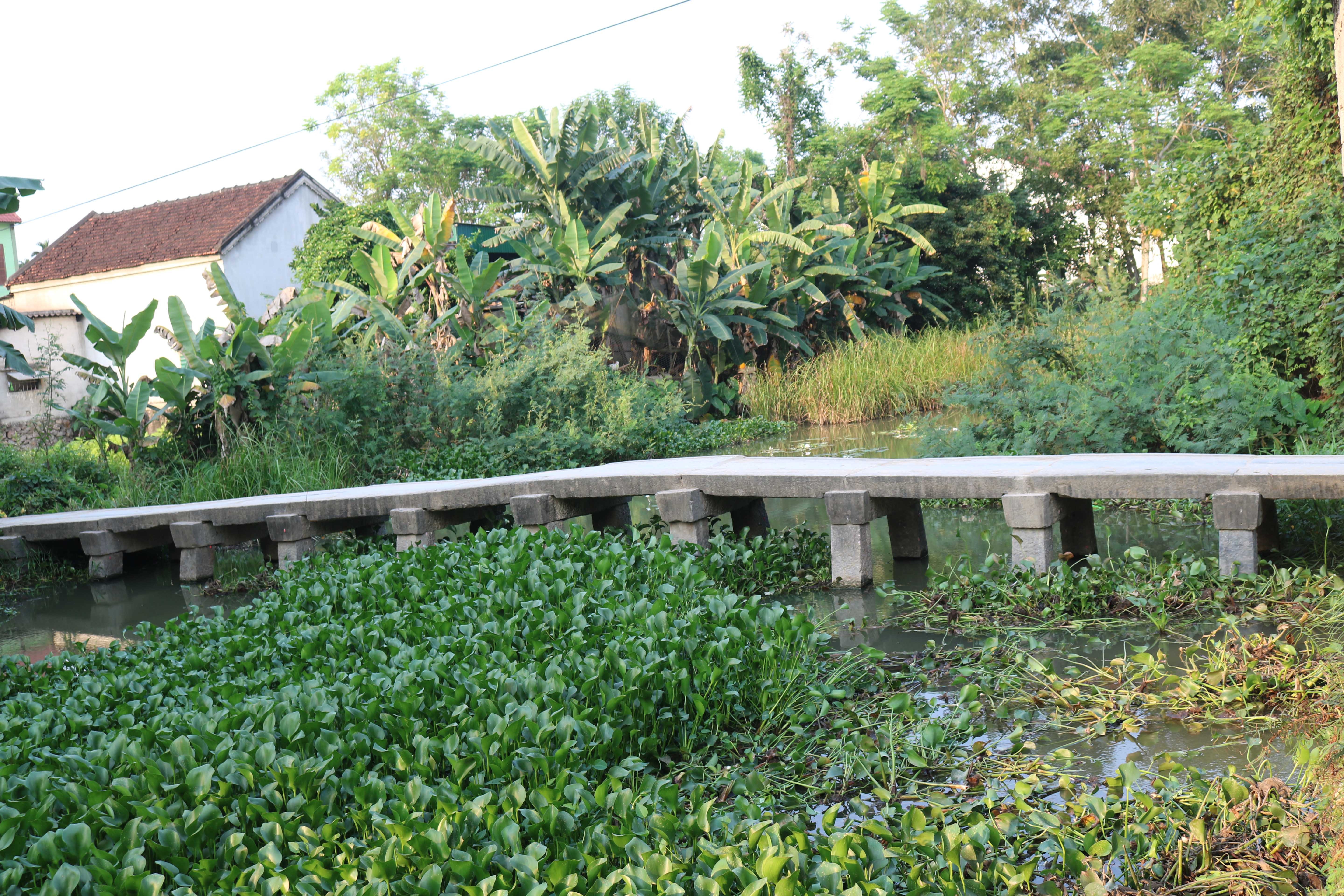 |
| What is special is that on Bau Roc there is a stone bridge that has existed since the beginning of the last century. This bridge was built by Mr. Nguyen Van Thuyet, commonly known as Mr. Ba Thuyet (Mr. Ba Hoan), who was originally from Phu Luu village, now Ich Hau commune, Loc Ha district (Ha Tinh). In 1921, he mobilized people to contribute and he himself spent his own money to build the stone bridge. He drew the design himself, then reported to the district mandarin for approval. With approval, Mr. Thuyet went all the way to Thanh Hoa and Ha Tinh to hire good stone workers and mobilized workers to chisel and carve stones to build the bridge. Photo: Huy Thu |
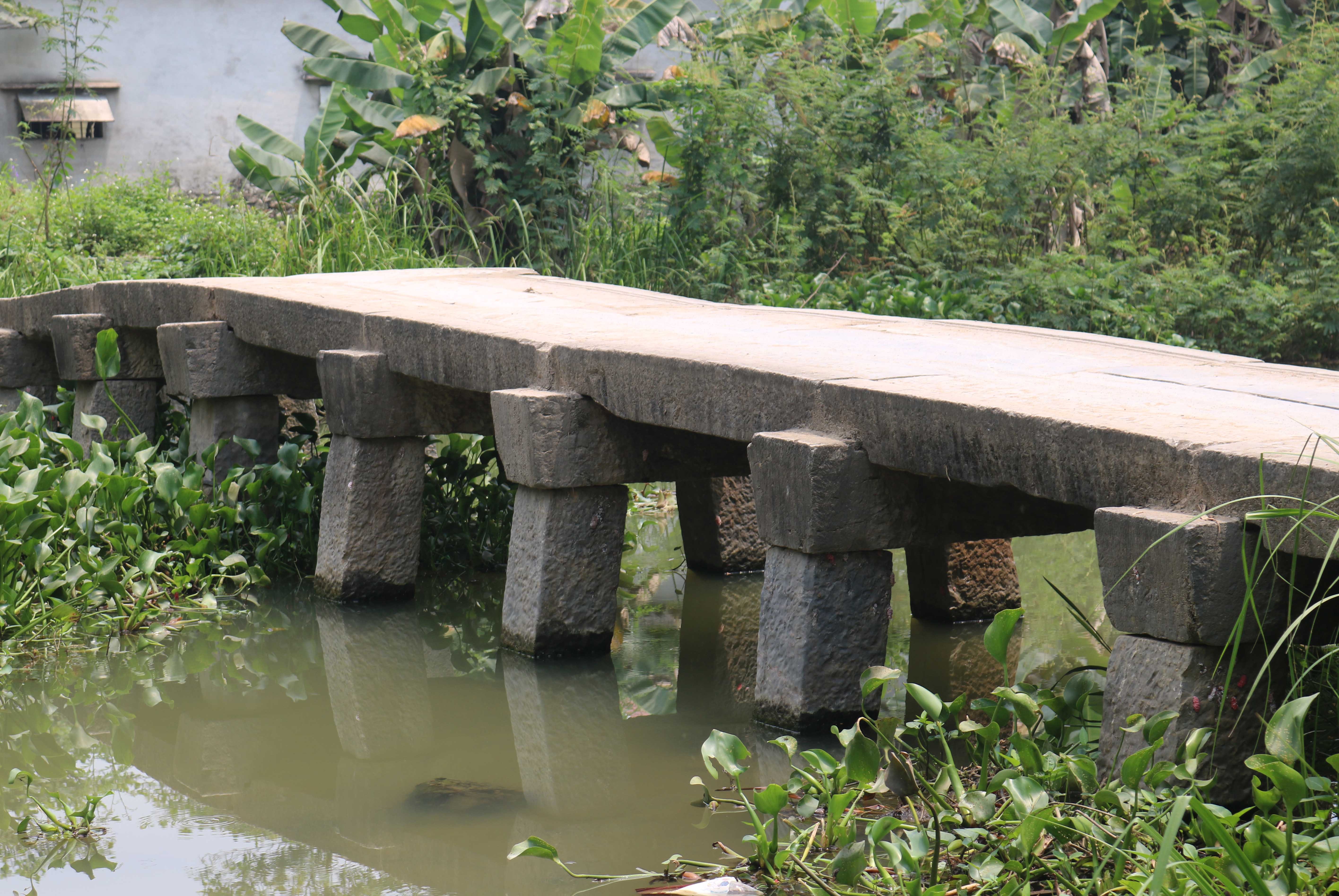 |
The bridge is nearly 30m long, curved in a rainbow shape, high in the middle and low at the two ends, consisting of 18 spans, each span is supported by sturdy stone pillars. Photo: Huy Thu |
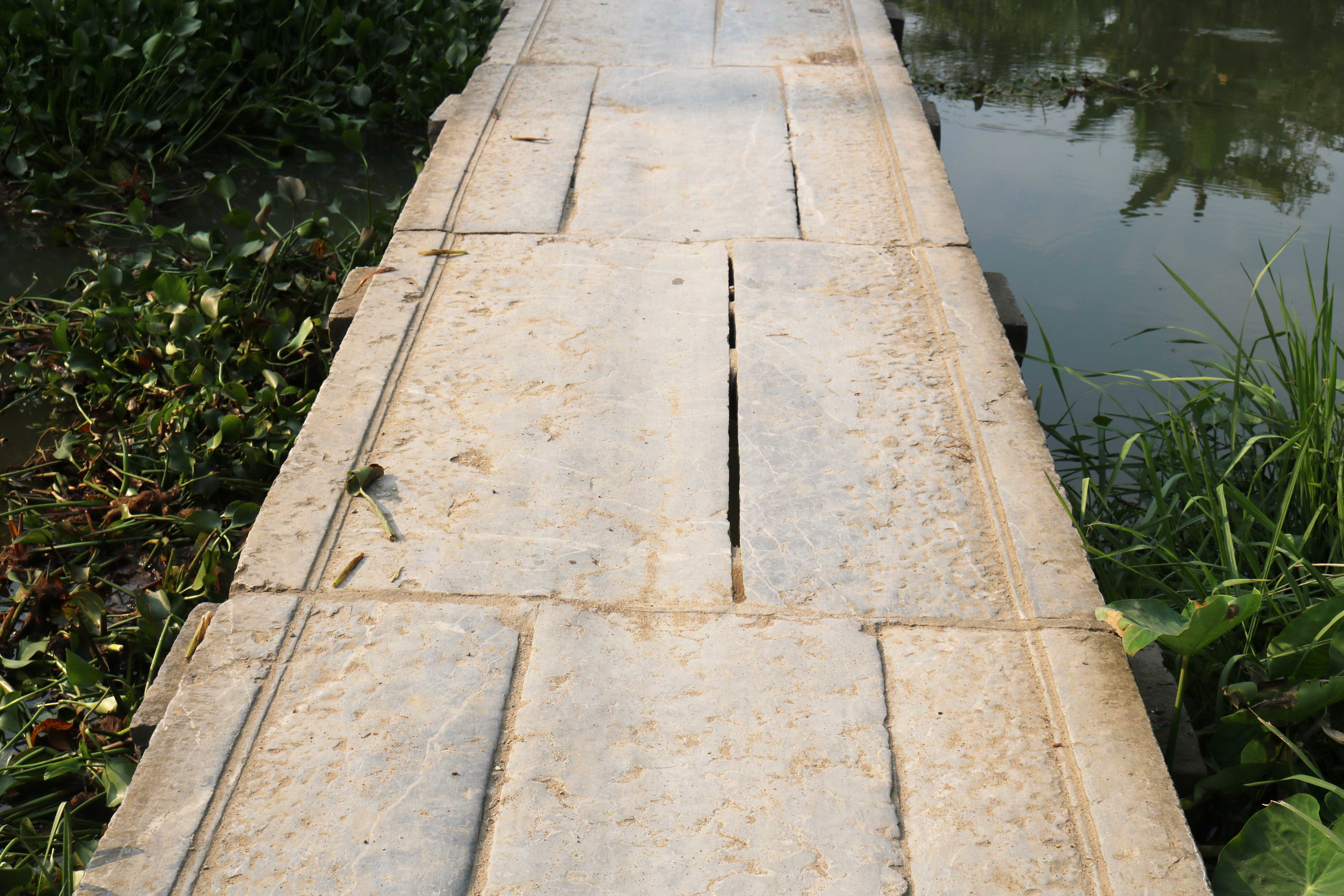 |
The bridge is 1.37m wide, made up of 40 stone slabs. Each span is made up of 2-3 stone slabs, each slab is 1.67m long, the widest slab is 95.5cm, the narrowest slab is 41.5cm. The stone slabs are joined together with very tight stone joints. On both sides of the bridge, the stone slabs are grooved. Photo: Huy Thu |
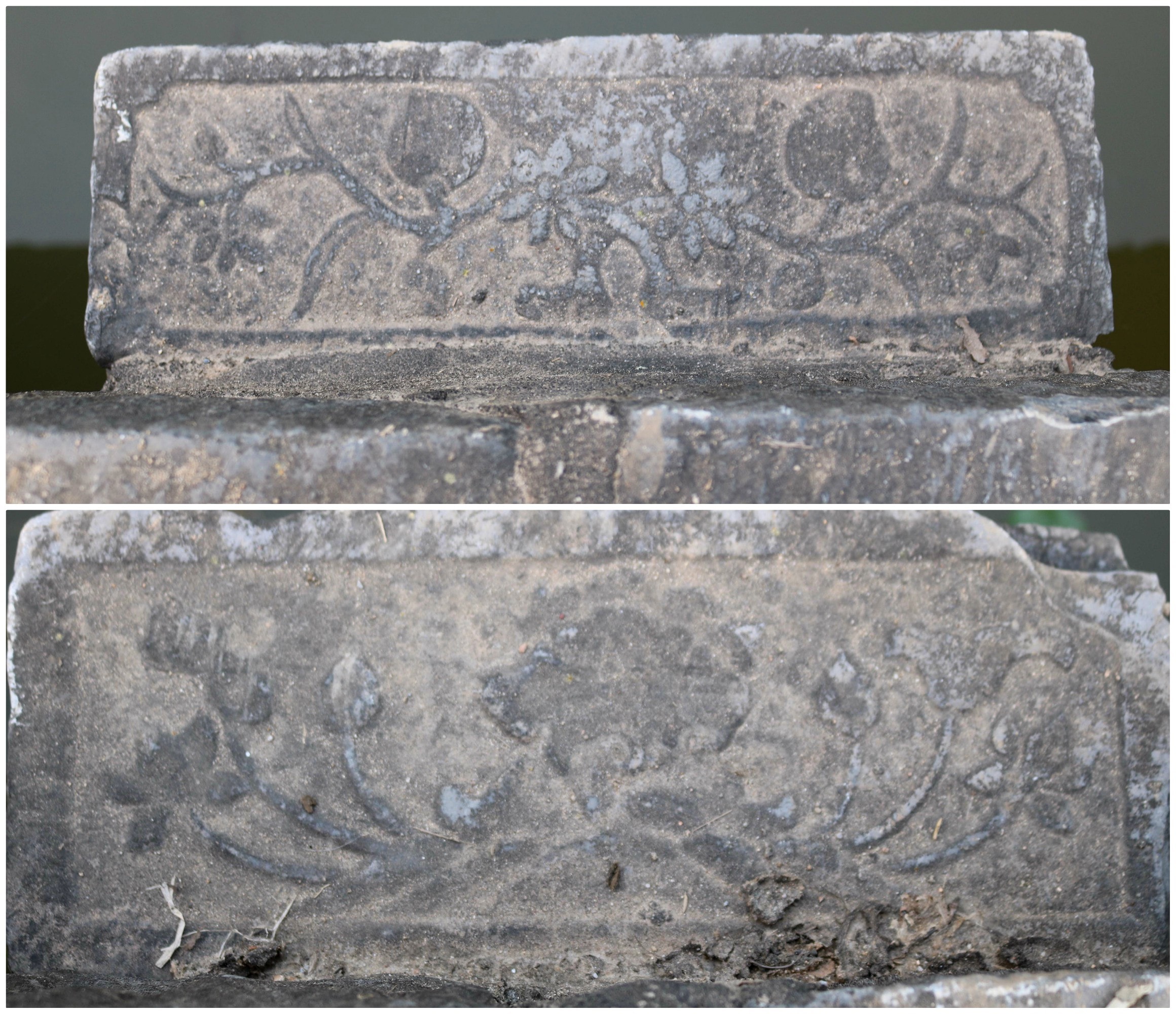 |
| The stone slabs across the bridge piers, on both sides, are carved with vivid decorative patterns. Photo: Huy Thu |
 |
With its essential traffic location, many bicycles and motorbikes still pass by the stone bridge every day. Photo: Huy Thu |
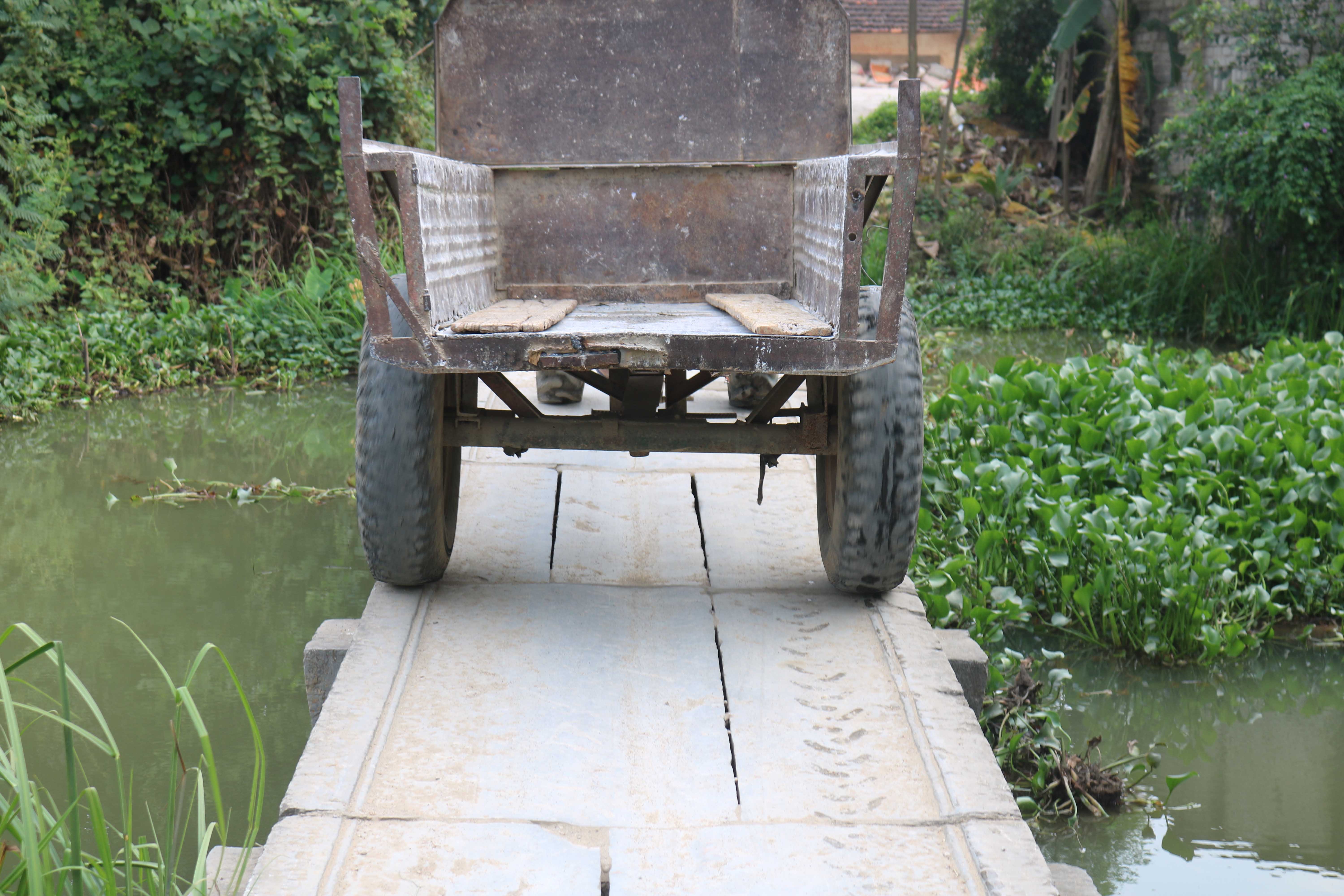 |
| Even farm vehicles still dare to cross the bridge, although the width of the bridge is quite narrow (just enough for 2 wheels). Photo: Huy Thu |
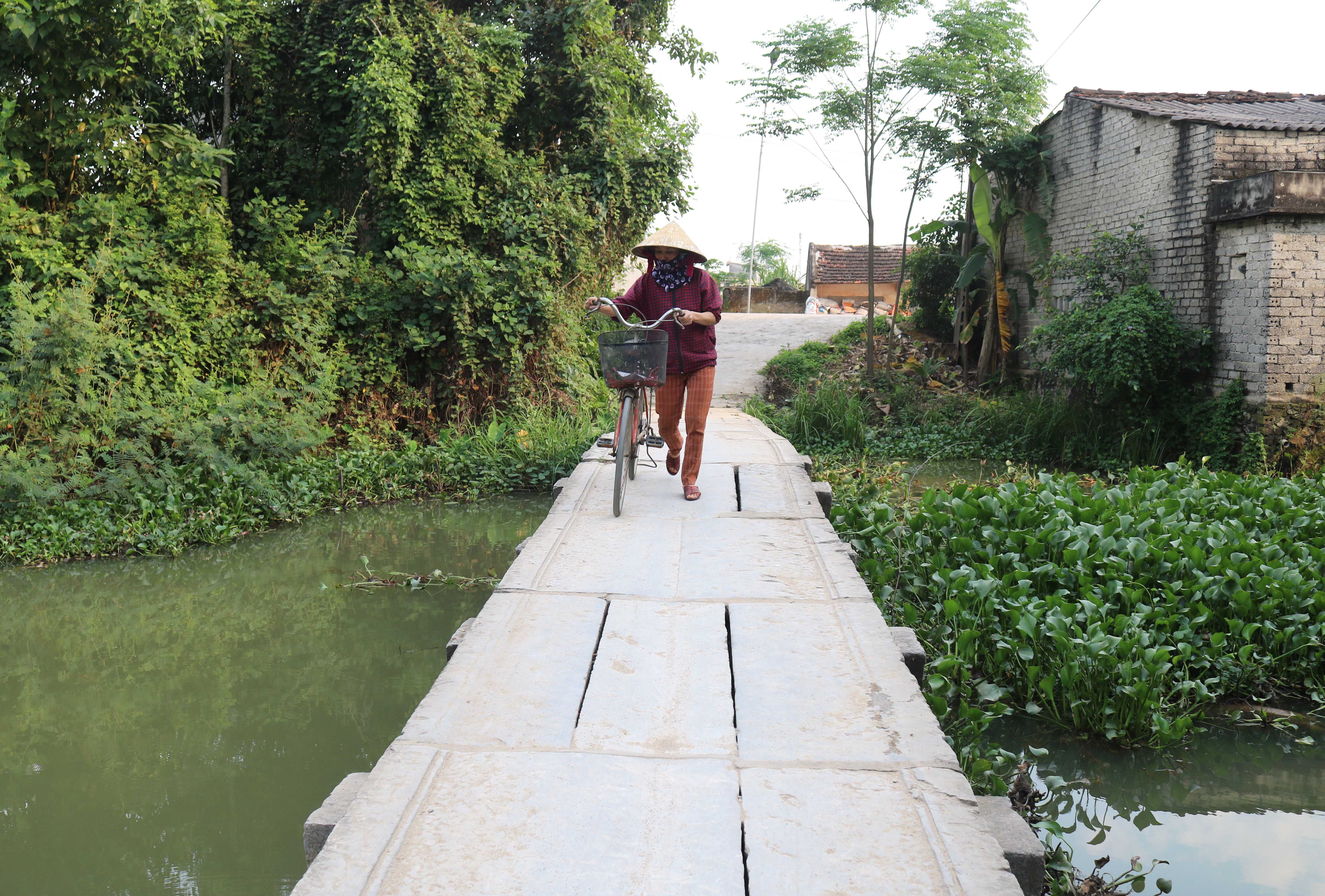 |
| Previously, the stone bridge was higher than the two river banks, but now due to the speed of construction and development by the people of the two communes on the Roc lake, the bridge is lost between the two banks of the Roc lake. Especially on the southern bank, the inter-village road has been upgraded, making it difficult to get on and off the bridge. Many people riding bicycles have to get off and walk when crossing the bridge. According to the people, when passing here, many people have fallen both their bicycles and themselves into the Roc lake. Photo: Huy Thu |
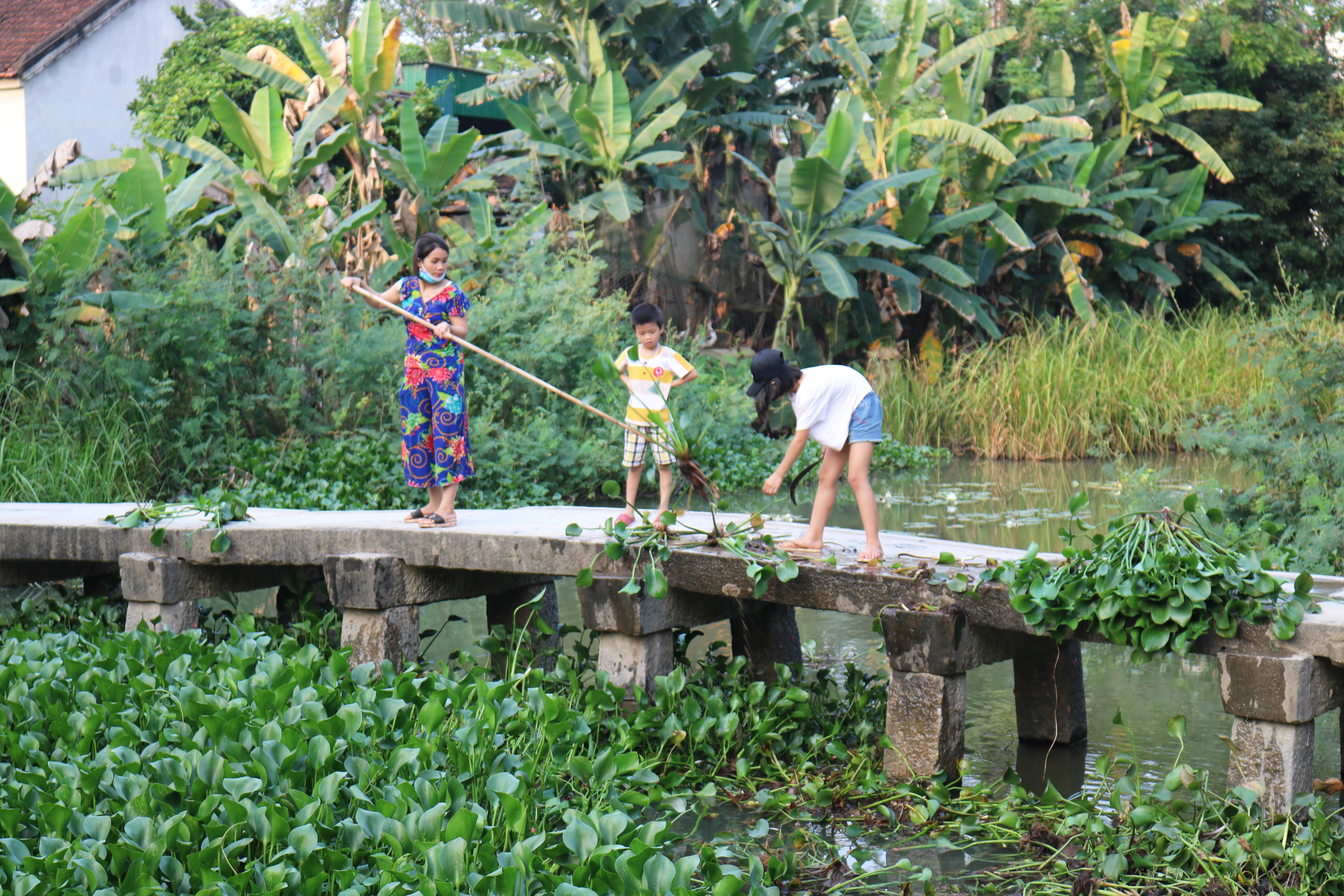 |
| According to local people, in the past, Bau Roc was quite clean, the two banks of the stone bridge were built into two water wharves with places to get on and off for people to bathe. Now the lake is dry, the water is dirty, the landscape of the stone bridge is no longer the same as before. In 1978, during a historic flood, a span of the bridge in the middle was washed away. In 1988, local people joined hands to repair the bridge. Photo: Huy Thu |
 |
On the North bank of Roc bridge in Trung Thanh commune, the ancients erected a 4-sided stone stele 0.8m high, 0.6m wide, engraved with Chinese characters, recording the merits of Mr. Thuyet and the people who contributed money and effort to build the bridge. This stele was originally erected in front of Phuc pagoda, but now people have moved it to the place close to the bridge entrance. Photo: Huy Thu |
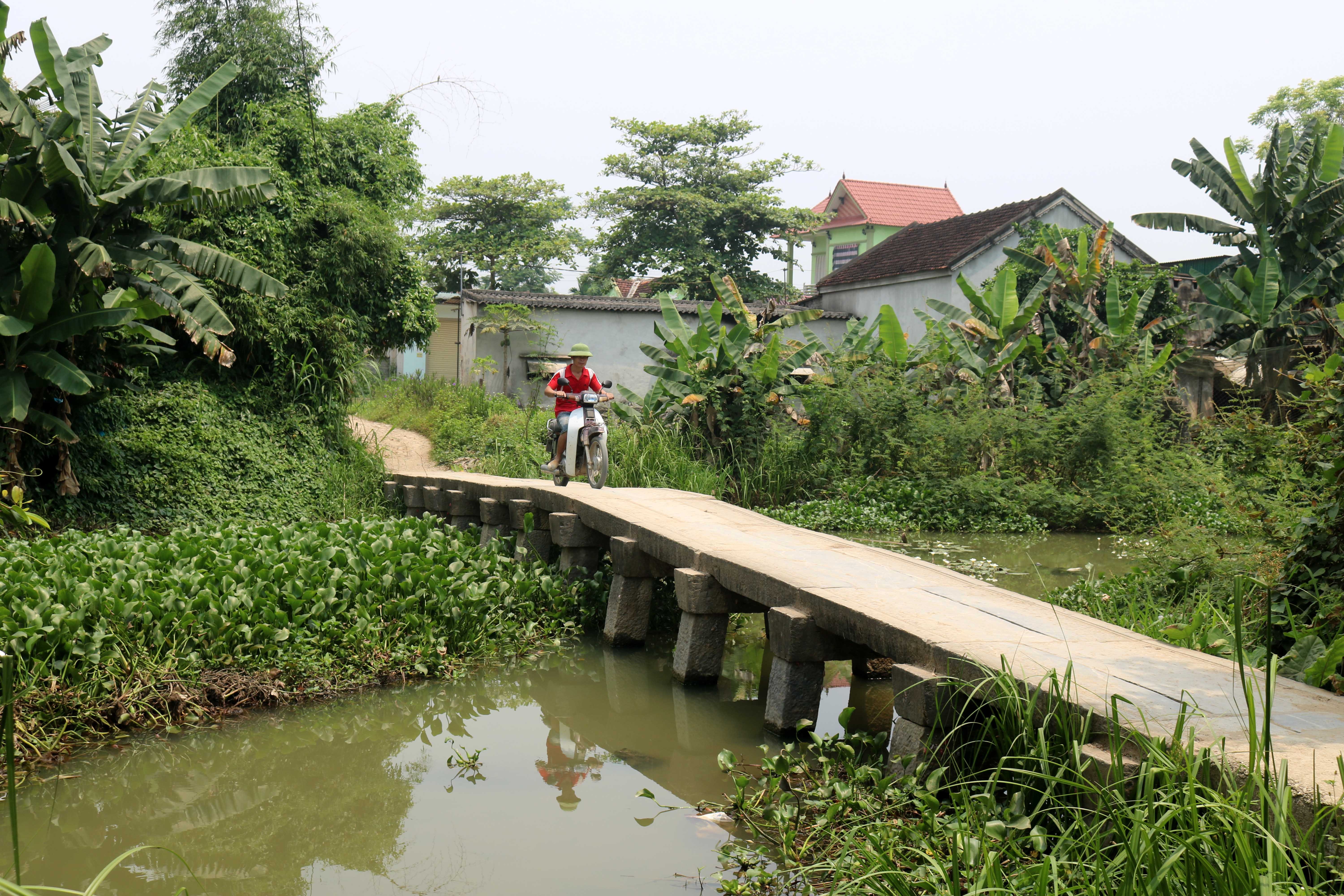 |
| A century has passed, Quan Thanh stone bridge is still standing firmly on Bau Roc as a vivid historical relic. Local people hope that this unique stone bridge will soon be classified as a relic for protection and restoration, considering it a pride of the homeland. Photo: Huy Thu |
| Every day people still cross the ancient Quan Thanh stone bridge. Clip: Huy Thu |








